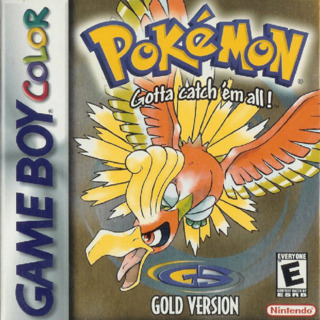Silver and Gold remain the best Pokemon games yet.
Pokemon Silver starts off as all other Pokemon games do. A studious Pokemon professor sends a local teenager on a journey throughout the land of Jhoto to become a Pokemon master, filling up the Pokedex (Pokemon dictionary) with information about each of the 250+ known creatures. This quest becomes optional, however, as this young trainer decides to take on the Pokemon League challenge, facing off against the 8 toughest trainers in Jhoto to reach the Elite Four and become the League Champion. Of course our young hero crosses tracks with a rather evil gang of Pokemon abusers called Team Rocket several times along the way and also fights to put an end to their bad intentions. Pokemon is rarely strong in plot, and Silver is no different, but as the case often is with video games, the story is only there to provide a setting for the game to take place in. It all works, even if it's nothing special.
So what carries Pokemon Silver is not its story, but its deep but approachable battle system. It's as simple as one Pokemon battling another until one runs out of HP, but there is so much that goes into this battle system to make it deep and strategic. There are many different types of Pokemon and each available move also takes on a particular type, so figuring out strengths and weaknesses is key. With just over 250 different Pokemon and even more various attacks, the game offers many different approaches to battles. It isn't very hard if one simply wants to teach their creatures the most powerful attacks and plow through everything in sight, and to be honest that strategy is usually the best one. However there are also loads of moves that will affect an opponent's status, raise stats such as Attack or Speed, and more. Each Pokemon has a full set of stats and up to four moves that all play a part in the myriads of equations that go into every battle; when looked at objectively it's easy to see that Pokemon's battle system is quite deep.
Outside of battle there are few genuine gameplay attractions other than wandering about seeking out more Pokemon to capture and train, but there are so many opportunities to battle that the game rarely becomes stale. It's hard to get bored with the game because there is always something to do, whether it's looking for new Pokemon or entering a bug catching contest, and most, if not all, of the game's side tasks involve plenty of battles.
What really makes Silver so great, though, is not only its battles but also its plentiful additions to the game's structure. It's leaps and bounds ahead of its predecessors for several reasons, the most noticeable of which is that the game keeps real time and translates it to the game's world. So yes, it actually gets dark at night in the game itself, but as a GameBoy game the visual change doesn't make a difference so much as how the game's world simply comes alive. It feels so much more real when you are forced to actually play the game at night to catch certain Pokemon or wait until a particular day of the week for a certain event to be available. It might sound annoying, and it can be at times, but the fact is that the feature gives the game an unexpected touch of reality, and the game's atmosphere and fun factor benefits from that in tremendous ways.
Silver also still has one huge advantage over all Pokemon titles before or since, and that is the inclusion of the 8 Kanto gyms from Red and Blue. So not only are there 8 gyms in the new land of Jhoto to beat and a new Elite Four to fight: after the Champion has been defeated, players are given the opportunity to travel to Kanto and fight all 8 gym leaders from the first game. This nearly doubles the game's baseline length and connects the game to its predecessor, which is simply great. Although there isn't as much to do in Kanto as in Jhoto, it's still a worthwhile extension of the game as a whole.
But Pokemon Silver isn't perfect, there are still a few rough spots here and there. One such issue is that HM moves (moves that are used both inside and outside of battle) still can't be forgotten when trying to learn new attacks. Though there is now a move deleter who alleviates part of the problem, it is still annoying when I want to teach a Pokemon a new move but can't make it forget an HM. And though I don't consider this a huge problem, the game eventually is lacking in higher leveled Pokemon to train against. Once a player's creatures are at level 70 or higher, even the Elite Four becomes too easy and short on experience points.
Pokemon has taken far too many hours of my life from me, and the game that is the greatest culprit of that is most definitely Silver. It is by far the most significant improvement of any Pokemon game yet as it took the formula of the original game and added a few substantial extra features to the game's world and very essence of what it is. Pokemon Silver is a fantastic game and an excellent RPG that's easily recommendable to anyone looking for a lengthy and deep RPG.
Positive:
+ Deep battle system is as engaging as before
+ Over 250 monsters to collect, not too many or too few
+ Real time really brings the game to life
+ 16 gyms make the game almost twice as long
Negative:
- HM moves are still a pain
9/10

